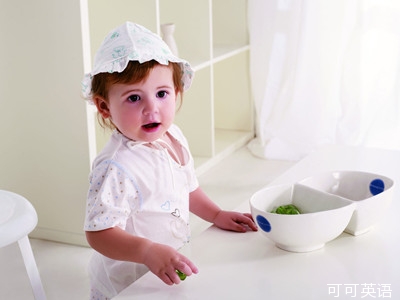Next time a three-year-old tells you what to do you might want to listen. Because three-year-olds can recognize when we adults are doing something counterproductive and are keen to help us find a better way. That's according to new research in the journal Developmental Psychology.
下次一位三歲的孩子告訴你做什么,也許你該好好聽聽。因?yàn)楫?dāng)成人們?cè)谧鰺o(wú)用功時(shí),三歲的孩子能認(rèn)識(shí)到這一點(diǎn),并急切地想要幫助我們找到更好的方法。刊登在《發(fā)展心理學(xué)》雜志上的一項(xiàng)新的研究如此認(rèn)為。

Scientists had 58 three-year-olds examine several functional and nonfunctional objects. Like a real phone and a toy phone, or a working marker and a dried-up marker.
科學(xué)家讓58名三歲的孩子檢查一組物體,其中一個(gè)功能完好,另一個(gè)則不然。比如一部真正的電話和一個(gè)玩具電話,或者一支有用的記號(hào)筆和一支沒用的記號(hào)筆。
Then the researcher would say something like, "I need to make a phone call, can you get me the phone." Sometimes they'd point to the real phone and other times point to the toy phone. The children would consistently bring over the functional item, regardless of whether the researcher pointed to it or asked specifically for it. In contrast, when they were told the item would just be thrown out, they'd bring either the nonfunctional or functional object. And in the case when any object would do, such as something that could act as a paperweight, the children brought either the fake one or the real one.
然后研究人員會(huì)這樣對(duì)他們說(shuō):“我需要打電話,你能把電話拿給我嗎。”有時(shí)候他們會(huì)指著真正的電話,有時(shí)候會(huì)指著玩具電話。結(jié)果不論研究人員是否指著它或?qū)iT要它,孩子們總是會(huì)把有用的東西拿過來(lái)。相反,如果告訴他們要把東西扔出去,他們要么拿過來(lái)沒用的東西,要么拿過來(lái)有用的東西。而且,在任一物體都能起作用的時(shí)候,例如能充當(dāng)書鎮(zhèn)的物體,孩子們會(huì)二者擇一。
Ultimately the children focused on the end goal and deliberately choose the best item, as opposed to what was instructed of them. A good reminder for us adults.
基本上,孩子們會(huì)關(guān)注最終目標(biāo),并有意挑選最適合的物體,即使有時(shí)會(huì)違背大人們的指示。這是對(duì)大人們最好的提醒。
原文譯文屬可可原創(chuàng),未經(jīng)允許請(qǐng)勿轉(zhuǎn)載!












